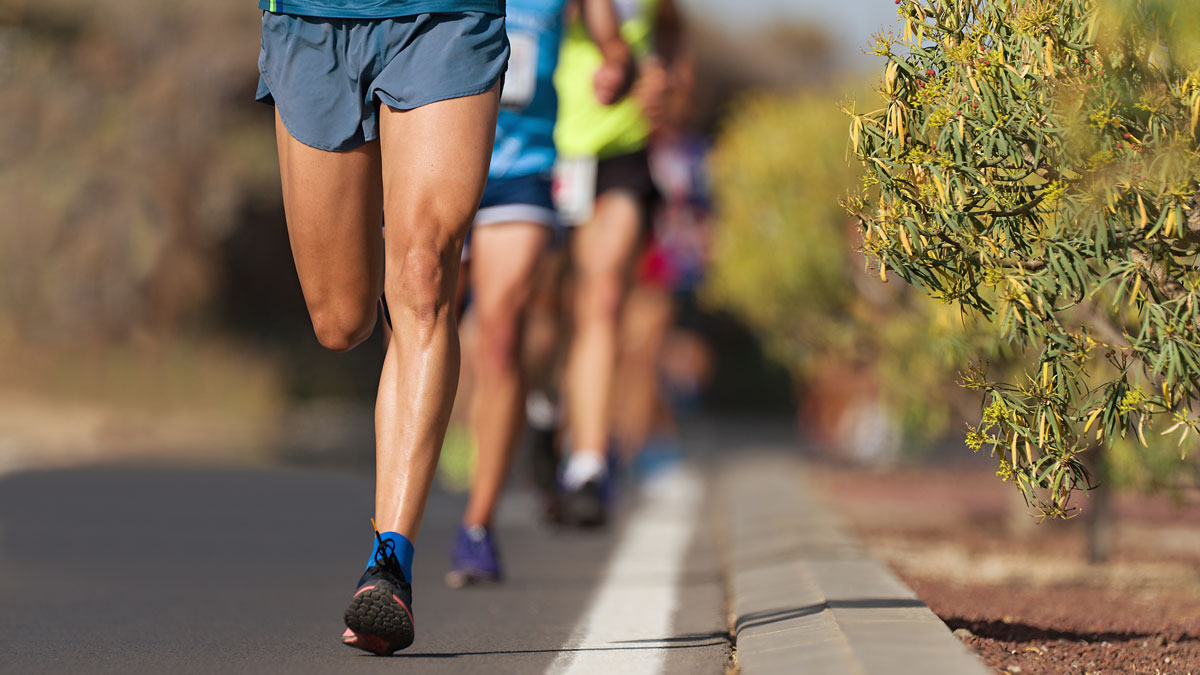Master Your Running Workout: Reliable Strategies for Success
Master Your Running Workout: Reliable Strategies for Success
Blog Article
Getting Over Discomfort in Operating: Approaches and Strategies That Work
Pain is an usual companion for numerous runners, usually acting as a barrier to attaining their preferred goals. However, with the ideal methods and techniques, it is possible to overcome and even stop the pain connected with running. By checking out numerous strategies such as comprehending the various sorts of running pain, enhancing shoes and type, incorporating cross-training and strength exercises, executing efficient recuperation techniques, and keeping correct nourishment and hydration, joggers can possibly ease their discomfort and improve their overall running experience.
Comprehending Different Sorts Of Running Pain
:max_bytes(150000):strip_icc()/HIIT-treadmill-workout-promo-04629651f9fc4854a8afca1c29ba528a.jpg)
An additional sort of running discomfort is joint pain, which can materialize as a sharp or throbbing discomfort in locations such as the knees, hips, or ankles (running workout). Joint pain may be triggered by elements like inappropriate running type, overuse, or underlying conditions like arthritis (Source). It is essential to set apart in between muscular tissue discomfort and joint discomfort, as the latter may call for clinical interest to avoid further injury
Understanding the various kinds of running pain is vital for efficient administration and avoidance strategies to make certain a safe and satisfying running experience.
Correct Footwear and Running Kind
To maximize efficiency and lower the risk of running-related injuries, selecting appropriate shoes and keeping proper running kind are important elements for joggers of all degrees. It is advised to select running shoes that are particularly developed for the individual's foot type, running gait, and the type of running task they involve in.

Cross-Training and Strength Exercises
Toughness workouts, like squats, lunges, and core workouts, play a crucial function in maintaining muscles and boosting running efficiency. They can deal with muscle inequalities, boost dexterity, and increase power output, all of which are necessary for running efficiency.
It is essential to enable for adequate rest between running sessions and cross-training activities to prevent overuse injuries. By including these elements right into a running regimen, runners can construct Check This Out a more powerful foundation, boost efficiency, and enjoy an extra sustainable running experience - useful guide.
Recuperation and Rest Strategies
Having developed the significance of cross-training and stamina workouts in a thorough running regimen, interest can now be guided towards Recuperation and Rest Techniques as important elements for optimizing performance and decreasing the threat of injuries. (running strategy)
Recovery after running is critical for muscle repair service and growth. Techniques such as foam rolling, stretching, and massage assistance in reducing muscle pain and boosting flexibility. Sufficient remainder in between runs enables the body to recover and adapt to the physical anxiety, stopping overuse injuries.
Integrating energetic healing days into a training routine, where low-intensity tasks like walking or cycling are carried out, can enhance blood flow and promote healing without putting excess pressure on the muscles. In addition, proper hydration and nutrition play a vital role in the recovery procedure by replenishing shed liquids and nutrients.
Quality sleep is one more vital aspect of recovery that need to not be forgotten. During sleep, the body undertakes fixing and regeneration procedures, contributing to general physical and mental well-being. By prioritizing recuperation and remainder strategies, runners can preserve optimum efficiency degrees and decrease the probability of experiencing pain or injuries.
Nutrition and Hydration for Runners
Carbohydrates give power for running, while proteins help in muscular tissue repair service and recovery. Adequate hydration is also essential to maintain optimum performance, as even light dehydration can negatively impact running performance. Furthermore, timing meals and snacks suitably prior to runs can help avoid intestinal discomfort and offer the necessary energy for peak performance.
Verdict
Finally, by recognizing the various kinds of running discomfort, putting on proper footwear, keeping appropriate running type, incorporating cross-training and strength workouts, focusing on healing and remainder, and concentrating on nourishment and hydration, runners can properly overcome pain and enhance their performance. Implementing these strategies and strategies can help joggers protect against injuries, boost their endurance, and inevitably take pleasure in a much more meeting running experience.
Report this page